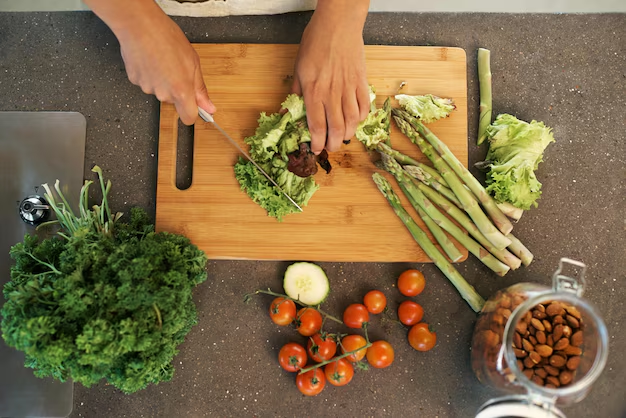How Long Does Fresh Salsa Stay Good in the Refrigerator?
There's nothing quite like the zesty taste of freshly made salsa. Whether you're scooping it up with crispy tortilla chips or using it to add a burst of flavor to your favorite dishes, fresh salsa is a versatile condiment that can elevate just about any meal. But how long can you store that delicious homemade or store-bought salsa in the fridge before it loses its appeal? Let's delve into the world of salsa storage to ensure you’re always enjoying it at its freshest.
🥑 Understanding Salsa: Ingredients, Freshness, and Flavor
Salsa Basics: What's in the Mix?
Fresh salsa, sometimes referred to as "pico de gallo" or "salsa fresca," typically consists of tomatoes, onions, peppers, cilantro, lime juice, and a variety of spices. Some variants might include fruits like mango or pineapple for a sweet twist. These ingredients are chopped and mixed raw, making fresh salsa a vibrant and nutrient-rich choice.
Freshness Factors: Why Ingredients Matter
The freshness of the ingredients, along with how they’re prepared, play a crucial role in how long salsa can last in the refrigerator. Tomatoes, as the primary ingredient, are rich in water content and can begin to soften quickly. Meanwhile, lime juice offers some preservative qualities due to its acidity, helping to extend the salsa’s shelf life marginally.
Flavor Retention: Keeping Salsa Delicious
Over time, the flavors in salsa can blend and become more robust, but they can also diminish in brightness. Freshness not only affects safety but taste—the crisp textures and distinct flavors of ingredients like cilantro and onions can fade, impacting the overall experience.
🌡️ Refrigeration for Optimal Freshness
Typical Shelf Life of Fresh Salsa
In general, homemade fresh salsa lasts about 4 to 7 days in the refrigerator. This duration depends on the freshness of the ingredients, cleanliness during preparation, and storage conditions. Store-bought fresh salsas might include preservatives, potentially extending their refrigerated life to a week or slightly longer if they remain unopened.
Storing Salsa Correctly
For maximum freshness:
- Use an Airtight Container 🔒: Helps prevent moisture and odors from seeping in.
- Keep It Cool 🧊: Store salsa at or below 40°F (4°C) to slow bacterial growth.
- Check the Temperature 🚫: If your fridge frequently hits temperatures above 40°F, the salsa might spoil sooner.
Signs Salsa Has Spoiled
Keep an eye (and nose) out for:
- Off Odor 👃: Sour or rancid smells are a clear indication.
- Mold ❌: Any fuzzy growth on the surface means immediate disposal.
- Flavor Changes 👅: Dramatic changes in taste often signal spoilage.
🕵️♂️ Factors Influencing Salsa's Shelf Life
Homemade vs. Store-Bought Salsas
Fresh, homemade salsa lacks preservatives and typically has a shorter shelf life compared to commercially prepared options. However, store-bought salsas still need to be consumed relatively quickly once opened.
The Role of Acidity
The acidic nature of lime juice, combined with other acidic ingredients like tomatoes, provides a natural barrier against some bacteria, slightly extending the freshness of the salsa. Always consider adding enough acidic ingredients to balance flavor and preserve freshness.
Accessorizing Your Salsa
Adding additional ingredients like avocados or corn can affect the shelf life, often shortening it due to their own spoilage characteristics. It's best to add these just before serving where possible.
🧩 Extending Salsa's Life: Tips and Tricks
Proper Portioning
Consider dividing salsa into smaller portions before storing. This reduces exposure to air and bacteria each time you serve it, potentially extending freshness.
Quick Freezing: Does It Work?
If you’ve prepared more salsa than you can consume, freezing might be an option, though it can alter texture. Freeze in portions using sealed containers or bags, leaving room for expansion. Defrost in the fridge, and use promptly once thawed.
Go-To Flavor Boosters
Over time, flavors can mellow. Perk up leftovers with a dash of fresh lime juice, a sprinkle of salt, or chopped herbs to revive the zestiness.
✅ Quick Reference Guide to Salsa Freshness
Here’s a condensed guide to keeping your salsa at its best:
Salsa Type: Fresh homemade
- Shelf Life: 4-7 days
- Storage: Airtight container in the fridge
- Signs of Spoilage: Mold, off smell, flavor changes
Salsa Type: Store-bought (open)
- Shelf Life: Up to 7 days
- Storage: Original container if resealable
- Signs of Spoilage: Check label for specific preservatives
Preservation Tips:
- Add Lime Juice for acidity
- Layer Flavors with Fresh Herbs before serving
- Freeze in Portions if necessary, using within 2-3 months
🍽️ Practical Uses and Pairings
Salsa is more than just a dip. It’s a versatile kitchen staple that can be used creatively in various dishes.
- Breakfast Boost: Add to omelets or scrambled eggs.
- Salad Topper: Mix with leafy greens or grain bowls.
- Taco Filling: A fresh addition to tacos or burritos.
- Grilled Marinade: Use as a marinade for meats or veggies before grilling.
👨🍳 Bringing It All Together
Being mindful of how long salsa can stay fresh in the refrigerator enhances both safety and enjoyment. Always prioritize fresh ingredients, diligent storage practices, and an awareness of spoilage signs to savor this classic condiment in all its flavorful glory. Whether you're a fan of the classic tomato-based variety or an adventurous explorer of fruit-infused blends, understanding storage will keep your culinary creation vibrant and delicious.
Remember, when in doubt, better safe than sorry—when salsa starts to show signs of aging, it's time for a fresh batch! Enjoy crafting, tasting, and sharing your fresh salsa creations with newfound confidence and insight.
